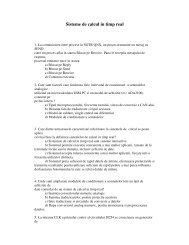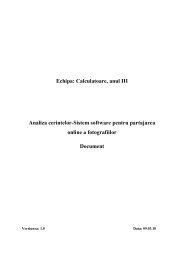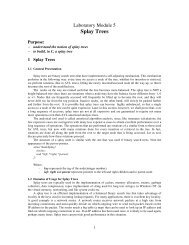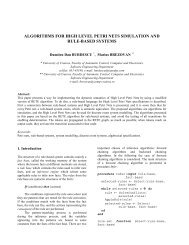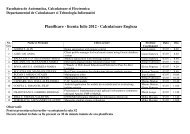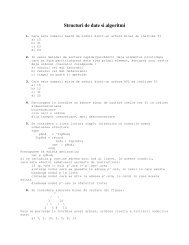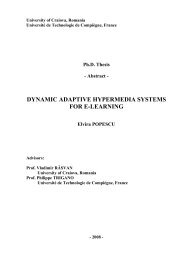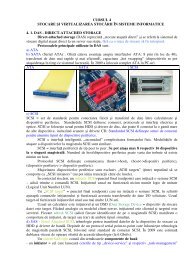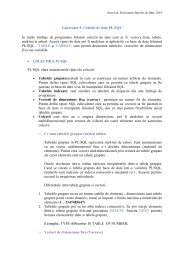You also want an ePaper? Increase the reach of your titles
YUMPU automatically turns print PDFs into web optimized ePapers that Google loves.
1.2.2 Deletion from AVL <strong>Trees</strong><br />
Deletion from AVL trees may be treated as deletion of a node for which left or right pointer are<br />
NULL. From this point of view the procedure is similar with deletion of nodes from a binary search tree.<br />
The difference consists in the fact that the path from the root node to the node that is to be deleted needs ro<br />
be recorded. The steps necessary for deleting nodes from an AVL tree are:<br />
Step1. Find the node that needs to be deleted. The path from root node to deleted node needs to be<br />
recorded.<br />
Step2. Find the predecessor/successor of the deleted node. This path needs also to be recorded.<br />
Step3. Replace the key of the deleted node with the key of the predecessor/successor. At successor<br />
level make the proper indirections (same as in a binary search tree).<br />
Step4. Update the balance factors on the backward path from the predecessor/successor node<br />
involved in deletion at step 3 to the root node. When necessary perform rotations.<br />
Let us suppose we have an AVL tree as the one in the next figure where node with key 12 needs to<br />
be deleted.<br />
Figure 11. Deletion of node with key 12 – initial situation<br />
Figure 12. Deletion of node with key 12 – after replacing key 12 with key 15<br />
9



